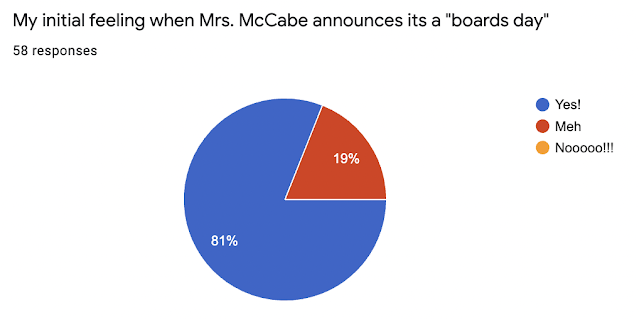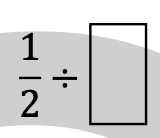Aside from the white boards propped all around my room,
The change in how homework was handled was probably the biggest change.
Pre-covid I would take completion grades on practice.
Students were to "complete" the practice before we moved on.
After reading this book, it became crystal clear how this completion was happening.
Students were completing it JUST TO HAVE IT DONE.
The purpose of practicing and becoming more efficient in the new skills
Was not even on their radar.
Simply getting it done, whether by copying another's work or just putting reasonable answers,
Was acceptable in their eyes
And MILES away from the purpose I had in mind.
During hybrid and remote learning,
I quickly realized that I had to take a grade on every little thing mentioned in Google Classroom.
It didn't take long to realize that the math grade was reflecting work ethic and responsibility
Instead of any true understanding of the concepts.
And then along comes BTC!
No more grades for any learning that occurs in the classroom.
Whether at the boards or in Check Your Understanding situations,
Students did as many problems as they wanted,
Knowing that any problems not completed would be good practice for learning the concepts.
But it was not required.
The focus quickly shifted to understanding the material
And away from having to complete all the problems.
We talked a lot about how many problems were needed to learn and apply a new skill,
And how this number could fluctuate from person to person,
And from concept to concept.
Another change was the availability of the answer sheets.
For every Check Your Understanding, answer keys were posted around the room.
Students could check their work as often as they liked.
The questions prompted from this approach were much more specific
And the amount of thinking during this activity was increased immensely.
It was interesting when new students would join our class.
When these students realized the answers were there for their taking,
They became very excited...anticipating the ease of completing the assignment.
When they eagerly asked if they could copy the answers,
And when I answered, "Sure! Go ahead!"
My students were quick to clarify that copying would not help them understand the math.
And then when it came time for the quiz where they could show off what they learned,
The person copying the answers would have a hard time!
Oh how I loved this shift in thinking!!!
My only conundrum with all this centers around the Simulation Trainer in my math curriculum.
The simulation trainer is totally a mimicking activity.
And as the book points out, "mimicking has limitations and is antithetical to the kind of thinking behaviors that thinking classrooms are trying to foster".
To incorporate both ideas, we use the Data/Computation problem at the boards.
And then the simulation trainer is done individually as a Check Your Understanding of sorts.
After every problem, is a video of how to solve it.
Repetition.
But I will be honest,
I do see thinking decrease during this time.
I will have to keep thinking how I can best use this component in a BTC classroom.
By the end of the year, students were reporting that they liked this "new" way of grading.
66% of the students liked it.
28% of the students had no opinion either way.
Only 7% did not like it, stating that they would like other opportunities to improve their grade.
Some of their comments to explain why they liked (or didn't like) about grades not being taken for class learning.
"It made me more relaxed and confident about this class and made me feel better about making mistakes."
"It allows me to make mistakes and learn from them and not get a bad grade because I didn't understand it."
"I loved how I could just learn so much and write it down and not have to get graded on it till the test. I believe it really helped me succeed in your class."
"It's learning. It shouldn't be graded."
"Because then people were working slow and not fast."
"It made my grades stay high and it made it seemed easier and less stressful."
"It makes the class seem like less of a thing we have to attend and something we WANT to attend."
When asked how they used the answer keys...
88% used them to check their work
76% corrected any mistakes they made
66% used the answer to help them figure out the problem
I loved it as well as the grade finally reflected true math understanding.
The number of semester F's fell considerably this year with only 1 semester F in the fall.
Last year we had a total of 9 F's for the entire year
And during that crazy hybrid/remote year??? 15 F's!






















